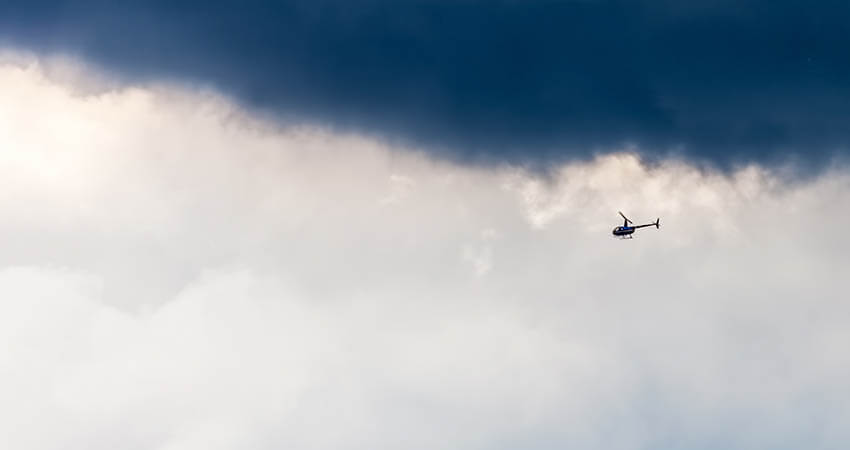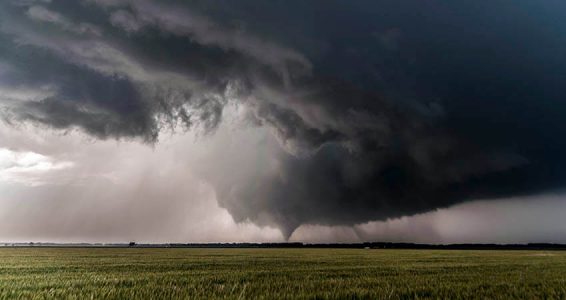Forecasted funnel clouds mean go-arounds and reroutes.
Well, it’s springtime here in Kansas which means one thing: tornadoes. Although these funneling foes aren’t always so friendly, especially to the aviators of the world, we want to share a few facts about these fierce forces of nature.
What is a tornado?
Sure, we’ve all seen The Wizard of Oz, but what exactly sucked up Dorothy and Toto and dropped them in Munchkinland? The FAA defines a tornado as, “a funnel-shaped cloud extending downward from the cumulonimbus base… if it touches a land surface, it is a ‘tornado.’” Tornadoes are generated within thunderstorms and often are accompanied by hail. Wind inside the vortex can exceed 200 kts, and funnels typically reach 660 feet (200 meters) in diameter.
A few tornado characteristics include:
- They appear in both isolated and squall line thunderstorms
- It is very common to find more than one tornado associated with a thunderstorm
- Any cloud connected to a severe thunderstorm may contain hidden vortexes

Risks of flight.
An aircraft encountering a tornado almost certainly will suffer structural damage and loss of control. There are no flight tips while flying near a tornado except to avoid them at all costs. In fact, the easiest and safest solution to avoid tornadoes is to avoid thunderstorms by a wide margin, meaning you will avoid tornadoes as well.
Avoid thunderstorms by tracking storms with your on-board weather radar system, continually check METARs and TAFs, review national weather reports before flights, or check with ATC for any changing weather conditions. Also remember to send in a PIREP if you see any funnel cloud activity, or check other PIREPs to see if there are any reports from other pilots in the area. Keeping each other well informed will help everyone make better weather-related decisions and help reduce accidents and incidents due to weather phenomena.
Note: ADS-B/XM weather images can be delayed or old by the time they reach the cockpit. Use your best judgement when using these weather images as a source for weather-related decisions.
Pilots are encouraged to keep away from thunderstorms, whether mild or severe, and in doing so, mitigates the risk of running into a tornado while enroute. Although tornadoes can cause extreme damage to both in air and on ground targets, with the right preparation, they can and should be avoided.
RELATED CTS TRAINING










